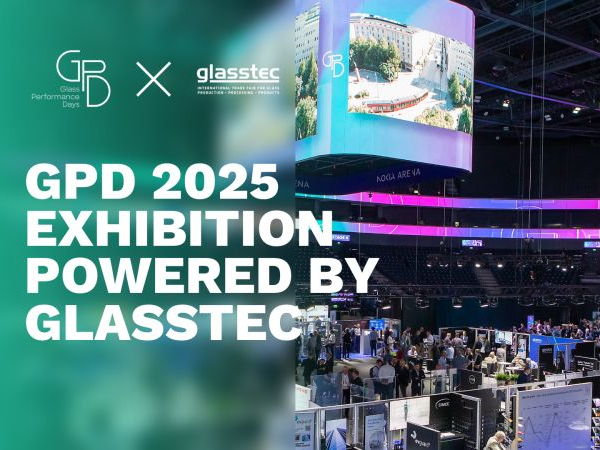Date: 6 October 2004
Engineering specialist Pneumofore has been supplying water-cooled vacuum pumps to the glass industry for over 50 years. Now, in response to the need to cut operating costs, the company has developed a new series of vacuum pumps with air cooling.
How many times have we opened a bottle of champagne and been surprised by the force with which the cork bursts out? We know, of course, that the reason for the explosion is the pressure inside the bottle. This is produced by the Champenoise method of fermentation, which involves periodic movement of the wine to make it clear and to give it the fizz that wine connoisseurs like so much. What most of us don’t know, though, is that the pressure inside the bottle can be quite a lot higher than that of the atmosphere. As regards the production process for this kind of bottle, it is therefore important that the thickness of the glass should be even and compact all over the surface of the mould, so as to strengthen those areas considered to be “critical”. This is in order to avoid stresses in the material that could give rise, literally, to explosions. Hence, to ensure even distribution of the raw material and to accelerate the forming process, the vacuum created inside the mould is used in addition to the traditional method of blowing the gob into the mould with oil-free compressed air at 3 bar. Because of minor safety issues, there is less concern about the use of vacuum for the mass production of glass bottles for ordinary red and white wines. Besides improving the quality of the product, the blowing time is also reduced, with consequent savings in production costs. The technique is also used for the production of jars for the preserved foods industry and for wide-mouthed glass containers in general. Last, but not least, the use of vacuum gives a better finish to the surface of the glass, allowing the creation of special shapes or designs in relief on the article.
Production technique
In general, glass containers are produced from lines with a set number of blowing sections or stations. The degree of vacuum used in the moulds varies according to the type of product: vacuum pumps with a high level of performance and reliability are used to achieve maximum stability in the rate of vacuum with the minimum amount of energy absorption. For example, for the operation of a line with 16 sections, a pump with a suction capacity of 700 cubic metres per hour is normally used. In recently manufactured machinery for glass production, vacuum is used for the dual purpose of speeding up the process of filling the mould (thus enhancing productivity), and controlling the distribution of the material onto the mould. Machinery of less recent construction is also frequently adapted in order to make best use of the vacuum in the production cycle. This is because the cost of vacuum is a fraction of that of oil-free air. Furthermore, the vacuum pumps are much more reliable than the usual oil-free compressors. As the furnaces are never turned off, the workload of these machines is considerable and can reach 8,700 hours of operation per year. It is therefore very important to have highly reliable vacuum pumps that require little maintenance and low energy consumption.
Types of vacuum pumps
Traditionally, the type of vacuum pump used in glassworks has always been of the rotary vane type. Over the years, however, other types of pumps have also been installed: air-cooled rotary vane; water-cooled rotary vane and screw; liquid ring vacuum pumps. It is quite clear that the glass industry has to reduce water consumption and maintenance costs, in other words, operating costs. The choice of the type of pump depends to a large extent on the degree of vacuum required, on handling costs and on any impurities that are sucked out. Figures 2 and 3 illustrate a comparison between the three types of vacuum pump used in glassworks today. The rate of suction volume of the three types of pump mentioned is represented as follows: the continuous line corresponds to the new Pneumofore UV vacuum unit with residual pressure of 2 mbar; the dotted line corresponds to the old rotary single-stage V-type Pneumofore pumps and to the new rotary screw pumps with a residual pressure of 10 mbar; the line with dashes and dots corresponds to the liquid ring pumps with residual pressure of 80 mbar. The absorption rate of this type of pump, which is already 50 per cent higher than vane pumps, increases in proportion to the degree of vacuum used. The capacity also changes according to the temperature of the water. Ejectors driven by compressed air are also used to generate vacuum. Despite to their easy installation and low purchase cost, they are dramatically expensive in operation, due to the compressed air consumption. The power consumption is usually one order of magnitude higher than vacuum pumps.
Plant engineering
Correct distribution of the vacuum is essential for achieving better performance and energy savings. While a drop in pressure of 0.1 bar represents a 10 per cent loss of vacuum, the same drop in load corresponds roughly to a 1.4 per cent decrease in pressure in a normal, 7-bar compressed air machine. It is therefore especially important to measure the distribution network of the vacuum constantly. Vacuum reacts differently from compressed air, so the collectors have to be measured with particular care. Experience has shown that pipes of insufficient width mean that a larger number of vacuum pumps have to be used. The same applies to the vacuum tanks, which have to be specially configured for glassworks, because of the use of graphite treated oil in a number of operations with vacuum in this field. The machines must be configured according to these specific requirements, and it is therefore essential that the manufacturer of the pumps should advise the user on installation, so as to enable maximum reliability.
Filtering
The air sucked out of the moulds in glassworks does not normally contain any solid pollutants, but in some operations graphite treated oil is widely used for lubricating the moulds. Measures can be taken, however, to prevent the graphite treated oil from reaching the pump. In this respect, Pneumofore’s vacuum pumps have established a long reputation of quality. Pneumofore has, in fact, been operating in the field of rotary machines for compressed air and vacuum since 1923, has installed hundreds of machines in the most important glassworks in Italy and abroad for over 50 years.
Developments
Aware of the need to automate the machines, to reduce maintenance and to eliminate both the consumption of water for cooling and of oil, Pneumofore has developed a new series of UV vacuum pumps air cooled. With capacities ranging from 500 to 3,200 cubic metres per hour, most of the pumps are in operation outside Italy. At Glasstec 2000 in Düsseldorf, Germany, 24th to 28th October, Pneumofore will be presenting its current maximum capacity air-cooled rotary vane pump, the Pneumofore UV50. With a capacity of 3,200 cubic metres per hour. Also on display will be a Cooper oil-free compressor; both machines offer maximum reliability and low energy consumption. Robert Hilfiker was trained as an engineer at the ETH (Swiss Federal Institute of Technology) in Zurich and completed an apprenticeship abroad before joining Pneumofore, the company founded by his father, in Turin, Italy. As the Managing Director of Pneumofore, Mr. Hilfiker has led our company through growth and success for over 40 years. He is one of the few serious industrial vacuum specialists worldwide.







Add new comment